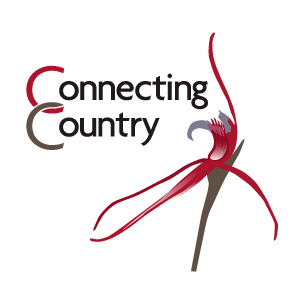On-ground actions
Would you like to increase and/or enhance native vegetation and wildlife habitat on your property?
Connecting Country works with landholders and community groups to restore landscapes across the Mount Alexander region, including working on both public and private land. Activities that may be funded include grazing regime change, exclusion fencing, pest plant and animal control, revegetation and natural regeneration. For eligible projects, Connecting Country may also provide technical advice, management plans, biodiversity assessments, contractor or work crew labour and incentive payments.
Our various projects are funded with grants from a variety of sources and generally support eligible landholders to protect, improve or create native vegetation, with a focus on increasing understorey health and diversity. The assistance we can offer landowners depends on the projects we currently have funded.
Current opportunities for landholders
PROJECT: Habitat trees for Phascogales
Do you have large old trees on your property? Are you in the Mount Alexander shire? Do you want to protect your large old trees and increase habitat for local fauna?
The unique and threatened Brush-tailed Phascogale relies on large old trees in the Mt Alexander Shire for breeding and foraging habitat. These trees also provide essential habitat for a diverse community of species by providing resources such as hollows, leaf litter and fallen limbs. Such habitat trees are a finite resource and it can take hundreds of years for them to form.
Our ‘habitat trees for Phascogales’ project aims to protect existing large old trees on grazing land for the Brush-Tailed Phascogale and other native fauna by creating habitat stepping-stones in the landscape.
The project will:
- protect large old trees, improving their health through excluding stock grazing and planting appropriate understorey plants around them;
- Create opportunities for succession of canopy species; and
- Provide stepping stones for fauna such as phascogales and birds across the landscape.
Landholder expressions of interest
We are looking for landholders in the Mount Alexander Shire area who are interested in participating.
Appropriate candidates will have:
- large old trees in grazing land that can be fenced off from grazing pressure.
- a willingness to retain fallen limbs, leaf litter and rocky outcrops in these fenced plots.
- a commitment to ongoing low-level maintenance of plantings and of weed and pest animal control.
If your property is suitable for the project, we will:
- Visit your property to identify large old trees and assess their potential for phascogale habitat.
- Develop a written property management plan setting out on-ground actions to protect large old trees and enhance habitat connectivity on your property.
- Provide contractor support and materials for fencing and planting ‘stepping stones’.
- Provide contractor support for weed and rabbit control within the project area.
- Provide suitable indigenous understory plants to help protect large old trees, increase habitat and food plants for fauna.
If you meet the criteria above and are keen to protect and restore old trees on your land, please complete our expression of interest form – EOI Click Here
Please return your expression of interest form to Connecting Country via email (info@connectingcountry.org.au). Expressions of interest close on 13 August 2023.
The Habitat Trees for Phascogales project is supported by the Victorian Government through the Nature Fund and the Ian and Shirley Norman Foundation.
ONGOING: Connecting Country landholder register
We are always on the look out for properties and landholders to add to the Connecting Country register. Once we have your the property details on file, we can contact you as opportunities arise.
To qualify your property will need to meet the following criteria:
- Location – within Mount Alexander Shire, Victoria.
- Land tenure – private land owned by the applicant.
- Commitment – landholders willing and able to commit to land management actions (e.g., weed and rabbit control, supplementary planting, grazing exclusion, retaining fallen trees).
- Long-term benefits – properties and landholders likely to result in long-term improvements in biodiversity and habitat quality for woodland birds and other native species.
Whether you are at the beginning of your journey with learning more about looking after the bush, or managing habitat on your property, or are more experienced with managing your land for habitat, we encourage all interested landholders in the Mount Alexander region to complete a general expression of interest form.
To access the general expression of interest form – Click here
To find out more about our current projects or discuss your eligibility, call the Connecting Country office on 0493 362 394. If you have filled out an expression of interest form in the past 12 months, we have you on file and you don’t need to fill in another form, but you can always let us know you are still interested by emailing info@connectingcountry.org.au.



